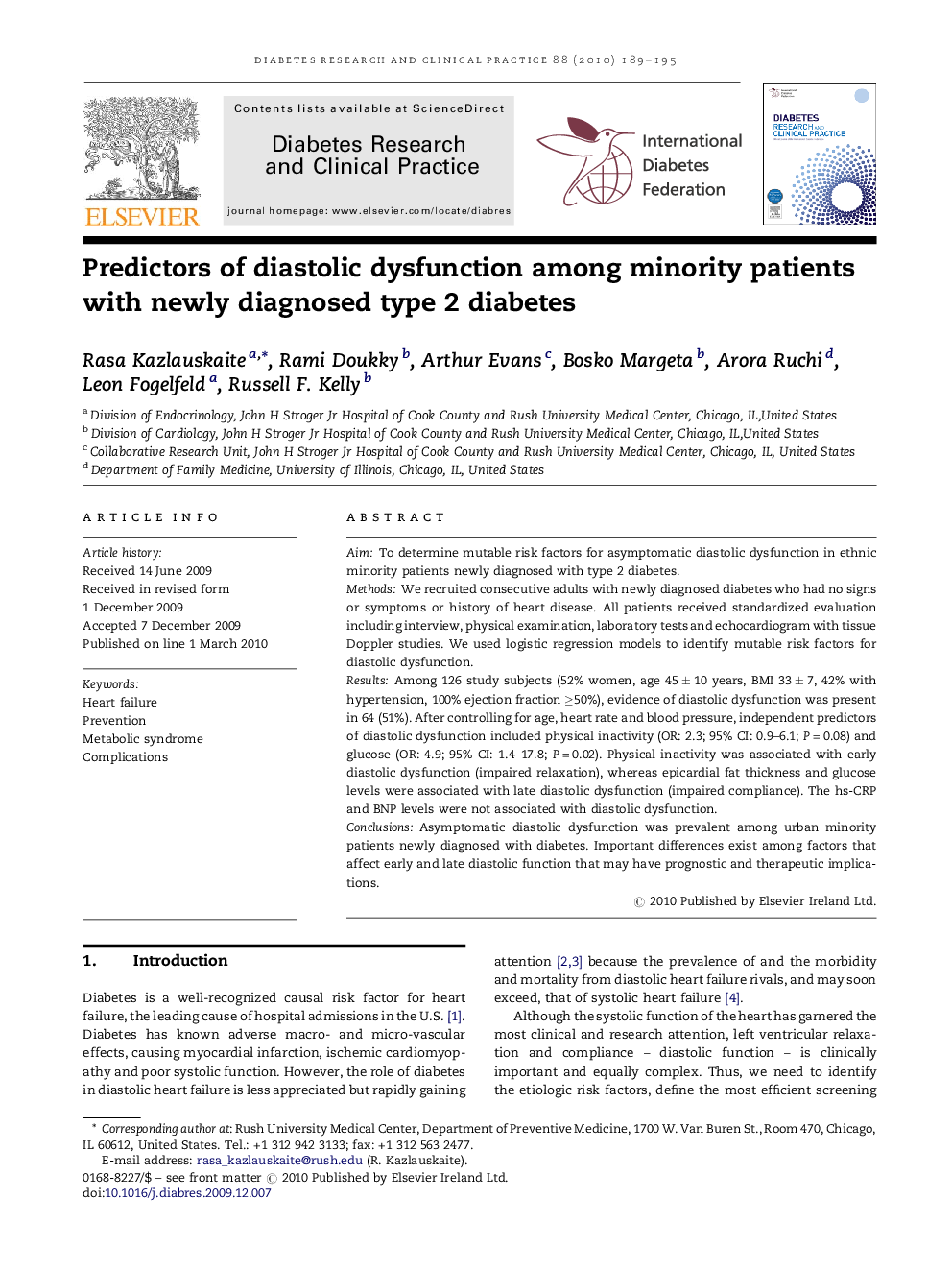| Article ID | Journal | Published Year | Pages | File Type |
|---|---|---|---|---|
| 2797532 | Diabetes Research and Clinical Practice | 2010 | 7 Pages |
AimTo determine mutable risk factors for asymptomatic diastolic dysfunction in ethnic minority patients newly diagnosed with type 2 diabetes.MethodsWe recruited consecutive adults with newly diagnosed diabetes who had no signs or symptoms or history of heart disease. All patients received standardized evaluation including interview, physical examination, laboratory tests and echocardiogram with tissue Doppler studies. We used logistic regression models to identify mutable risk factors for diastolic dysfunction.ResultsAmong 126 study subjects (52% women, age 45 ± 10 years, BMI 33 ± 7, 42% with hypertension, 100% ejection fraction ≥50%), evidence of diastolic dysfunction was present in 64 (51%). After controlling for age, heart rate and blood pressure, independent predictors of diastolic dysfunction included physical inactivity (OR: 2.3; 95% CI: 0.9–6.1; P = 0.08) and glucose (OR: 4.9; 95% CI: 1.4–17.8; P = 0.02). Physical inactivity was associated with early diastolic dysfunction (impaired relaxation), whereas epicardial fat thickness and glucose levels were associated with late diastolic dysfunction (impaired compliance). The hs-CRP and BNP levels were not associated with diastolic dysfunction.ConclusionsAsymptomatic diastolic dysfunction was prevalent among urban minority patients newly diagnosed with diabetes. Important differences exist among factors that affect early and late diastolic function that may have prognostic and therapeutic implications.
